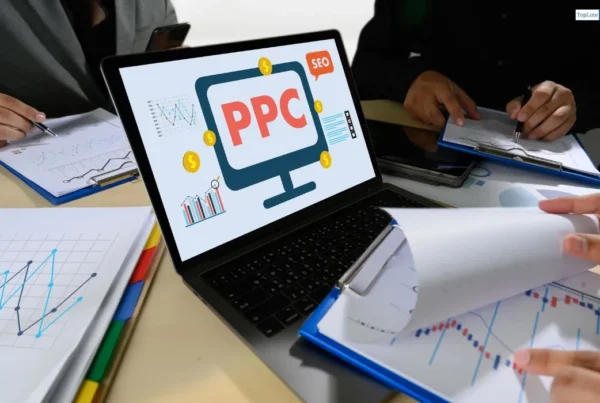In the digital age, where social media platforms are bustling with activity, paid social advertising has emerged as a powerful tool for businesses and individuals alike to connect with their target audience, increase brand visibility, and achieve specific marketing goals.
This article delves into the world of paid social advertising, exploring its benefits, strategies, and how it can be leveraged effectively to achieve desired results.
Unveiling Paid Social Advertising
Defining Paid Social Advertising
Paid social advertising refers to the practice of promoting content, products, or services on social media platforms by paying for ad placements.
These ads appear in users’ feeds, stories, or on the sidebar, allowing advertisers to target specific demographics and interests.
The Growing Significance
As social media usage continues to rise, paid social advertising has become an integral component of digital marketing strategies.
Platforms like Facebook, Instagram, Twitter, LinkedIn, and TikTok offer diverse ad formats to cater to various marketing objectives.
Advantages of Paid Social Advertising
Precise Targeting
Paid social advertising allows advertisers to precisely target their desired audience based on demographics, interests, behaviors, and even location, ensuring ads reach the right people.
Enhanced Reach and Visibility
By promoting content, businesses can extend their reach beyond their organic followers, ensuring their message is seen by a larger audience.
Customizable Budgets
Paid social advertising accommodates a range of budgets.
Whether you’re a small business or a large corporation, you can set spending limits that align with your financial goals.
Measurable ROI
Most social media platforms provide robust analytics, allowing advertisers to track key performance indicators (KPIs) such as engagement, clicks, conversions, and return on investment (ROI).
Crafting an Effective Paid Social Advertising Strategy
 Defining Goals and Objectives
Defining Goals and Objectives
Before launching a campaign, clearly define your goals—whether it’s increasing website traffic, generating leads, boosting sales, or enhancing brand awareness.
Selecting the Right Platform
Different platforms cater to different audiences and niches.
Research and choose platforms that align with your target audience and marketing goals.
Designing Compelling Content
Create visually appealing and engaging content that resonates with your audience.
This includes attention-grabbing visuals, persuasive copy, and a strong call to action.
A/B Testing
Run A/B tests with different ad variations to identify which elements resonate best with your audience, enabling you to refine your strategy for optimal results.
Maximizing Paid Social Advertising Success
Utilizing Retargeting
Retargeting allows you to show ads to users who have interacted with your website or previous ads, increasing the likelihood of conversion.
Monitoring and Optimization
Regularly monitor your campaign’s performance and make necessary adjustments to optimize its effectiveness.
This includes tweaking targeting, adjusting budgets, and refining ad content.
Staying Current
Social media trends and algorithms evolve rapidly.
Stay up to date with platform changes to ensure your ads remain relevant and effective.
Conclusion
Paid social advertising opens the doors to a world of possibilities for businesses and individuals seeking to make an impact in the digital landscape.
By crafting strategic campaigns, leveraging precise targeting, and constantly refining your approach, you can harness the potential of paid social advertising to boost your reach, engagement, and overall marketing success.
FAQs
What is paid social advertising?
Paid social advertising involves promoting content, products, or services on social media platforms by paying for ad placements to reach a specific audience.
Which social media platforms offer paid advertising options?
Platforms like Facebook, Instagram, Twitter, LinkedIn, and TikTok offer paid advertising options with various ad formats.
How can I ensure my paid social ads are effective?
 Define clear goals, target the right audience, create compelling content, and continually monitor and optimize your campaigns.
Define clear goals, target the right audience, create compelling content, and continually monitor and optimize your campaigns.
What are key performance indicators (KPIs) for paid social advertising?
KPIs include engagement metrics like likes, shares, and comments, as well as clicks, conversions, and return on investment (ROI).
Can I control my budget for paid social advertising?
Yes, most platforms allow you to set daily or lifetime budgets for your campaigns, making it adaptable to your financial goals.
What is retargeting in paid social advertising?
Retargeting involves showing ads to users who have previously interacted with your website or ads, increasing the chances of conversion.
How often should I optimize my paid social advertising campaigns?
Regularly monitor your campaigns and optimize as needed. This could be weekly or bi-weekly, depending on the campaign’s duration.
Are there specific ad formats for different marketing goals?
Yes, platforms offer a variety of ad formats such as image ads, video ads, carousel ads, and more, each suited for different objectives.
Can paid social advertising benefit small businesses?
Absolutely. Paid social advertising allows small businesses to target specific audiences effectively, even with smaller budgets.
Is it important to stay updated on social media platform changes?
Yes, social media algorithms and trends change frequently. Staying informed helps you tailor your strategy to current platform dynamics.




